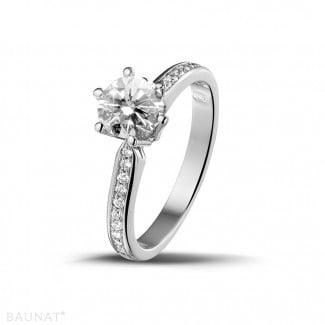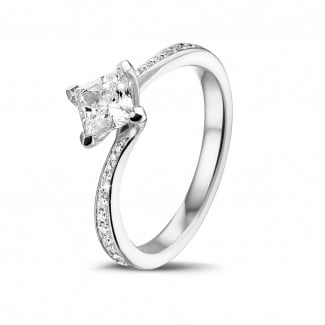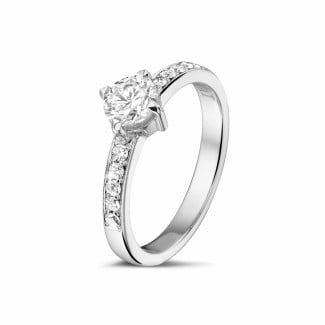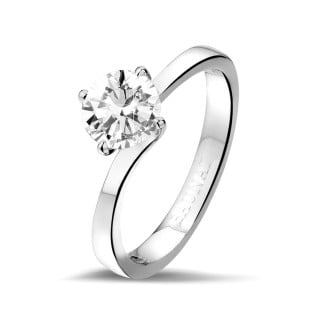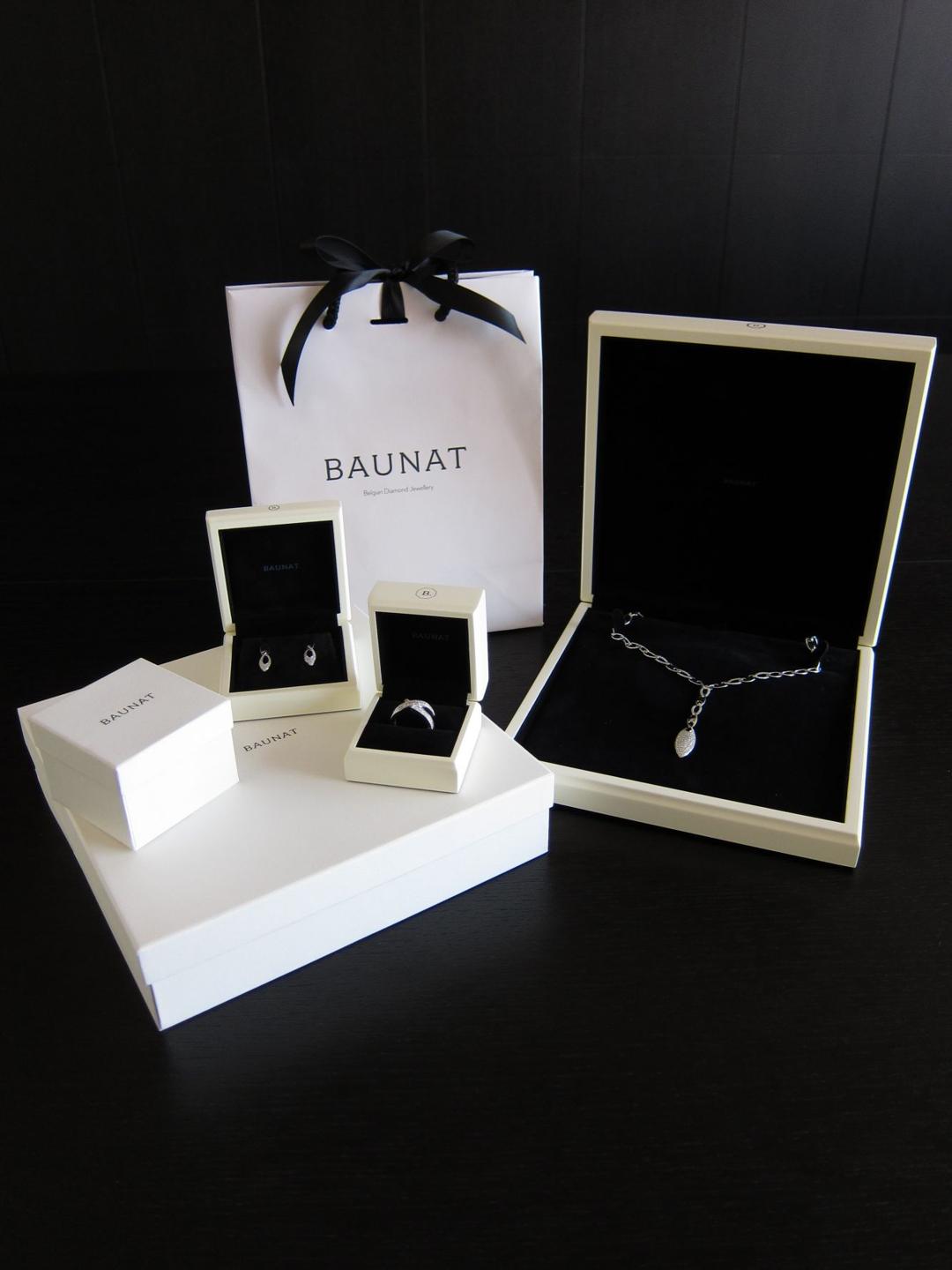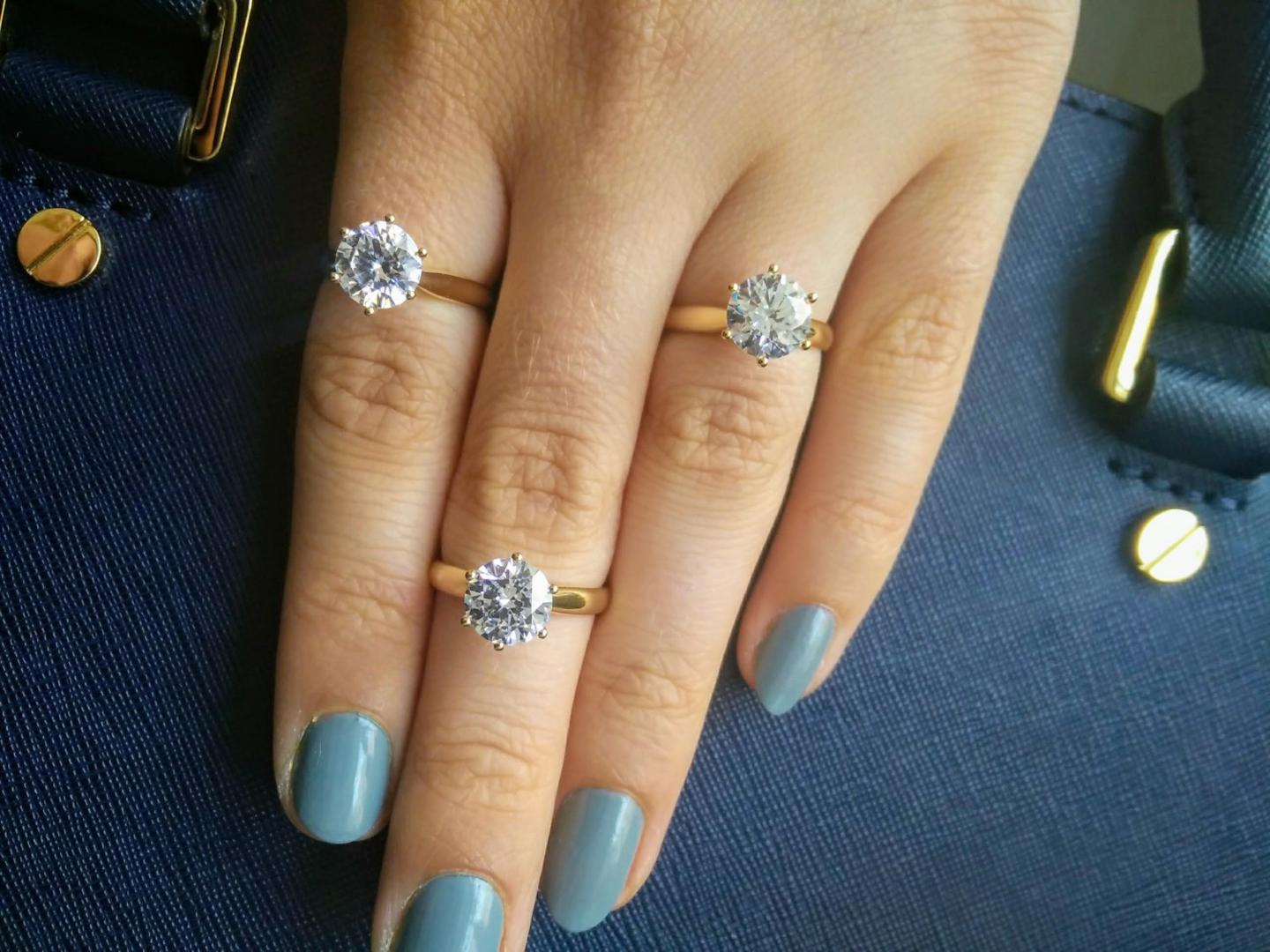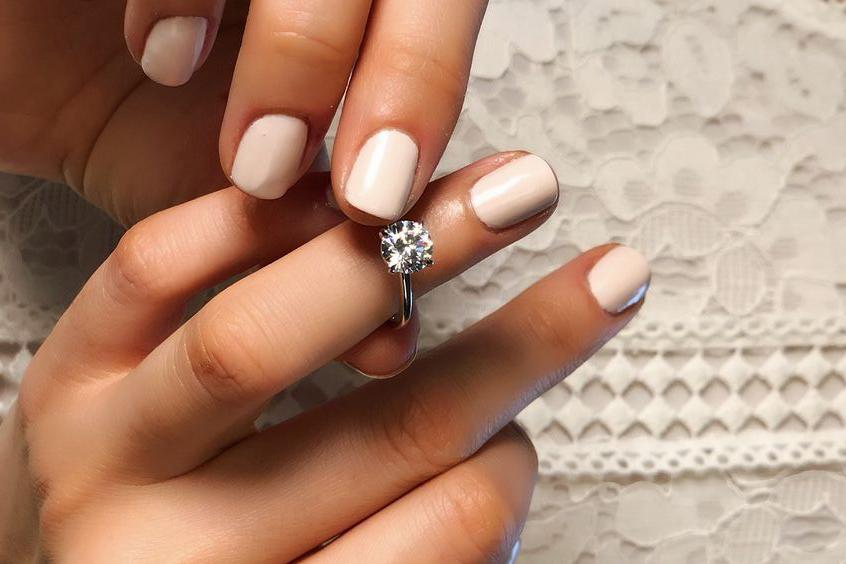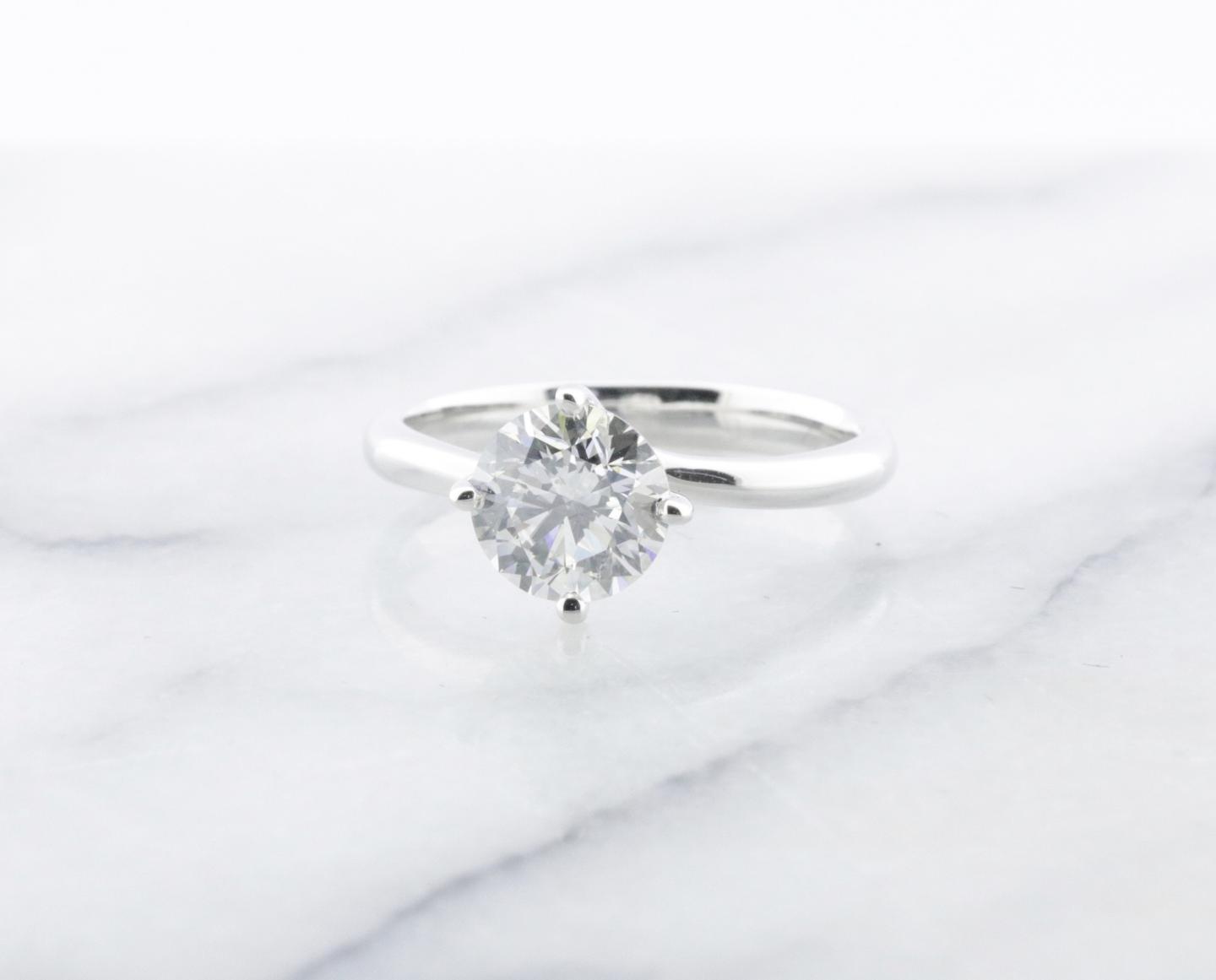Inspirational insights
Blogs in the spotlight
- How do I buy the perfect diamond ring?
- Choosing the perfect wedding ring
- Buying an engagement ring: expert tips & tricks
- Which earrings are the right ones for you?
- How to choose the perfect diamond bracelet?
- How to choose a necklace for ladies?
- Take your time in choosing your watch
- What's the right jewellery for each occasion?
- Why buy diamond jewellery online?
- A guide to building up your jewellery collection
- What types of precious metals are there?
- What types of precious metals are there?
- Jewellery trends and innovations in 2020
- What sorts of diamond setting are there?
Choosing the right jewellery, such as an engagement ring, a pair of earrings or a necklace, is no easy matter. Today you can choose from a variety of precious metals, diamond cuts and diamond settings. As this last is often overlooked, we have outlined the various diamond settings here. This provides an introduction to all the options, helping you make the right choice.
Most viewed diamond jewels
What is a diamond setting?
Types of diamond setting
There are plenty of diamond settings to choose from, but these are the most important:
- The prong setting
- The case or bezel setting
- The cathedral setting
- The tension setting
- The channel setting
- The pavé setting

A prong setting is not only used for rings, but is also easy to use with other jewellery, such as earrings.

With this setting it is also easy to substitute your central colourless diamond with a coloured gem, such as sapphire.

The half-case




The diamonds are also more susceptible to damage, and more dust and dirt will gather in this setting.

The ring’s outer surface is fairly flat and so it is also more secure. This setting can also be used on all kinds of jewellery, such as an eternity ring or trilogy ring.


The diamonds are set into a V-shaped groove with small beads on the prongs. As a result, more light passes through than with the normal pavé setting, so the diamonds sparkle more.
Find out more about settings
Frequently asked Questions
Which material should I choose for my ring?
For the ring band, you should opt for high-quality precious metals, such as gold or platinum. They are beautiful, durable and suitable for almost everyone with sensitive skin or allergies. Diamonds - from a large solitary stone to a setting with various small diamonds - give the ring extra class and radiance. If you like colour, but coloured diamonds are a bit too pricey, then you're sure to find a gorgeous ring with a sapphire, ruby or emerald.
Can I create a tailor-made jewel?
- How can I design a customised piece of jewellery myself?
- How can I personalise an existing design from the BAUNAT collection?
We offer a wide range of exclusive diamond jewellery, from dazzling engagement rings to elegant bracelets and cool watches for men. You can choose between designs ranging from modern and trendy to traditional and elegant. If you don't quite find your taste among our offerings, you can still opt for customisation. Our craftsmen provide quality and affordable customised jewellery.
How can I design a customised piece of jewellery entirely by myself?
If you are creative or have a clear design in mind, you can come to us and work with our designers to create a customised piece of jewellery. So you can have a very personal engagement ring made that will surely have a lot of emotional value when you ask her the question. Or design a custom-made diamond locket for a special or festive occasion.
You can discuss this with our experts in one of our showrooms or send us your own (rough) sketch of your jewel. Or send us an image of the exclusive piece of jewellery on which you would like to base your design. In addition, we would like to receive the following information in order to prepare an offer for your customised piece of jewellery:
- An image or rough sketch of your design
- For a ring: the ring size
- Material: 18Kt white gold, 18Kt yellow gold, 18Kt red gold, 950 platinum
- The number, size(s) and quality of the diamond(s)
- Estimate of your budget
How the creation process of your tailor-made jewellery takes place:
1. From your idea to our best price and quotation
After you have sent us the necessary information, we will provide you with an offer for your custom-made jewellery. Because we buy our gemstones directly at the source and mainly work with online sales, we can guarantee the best price-quality. We also have a strict zero-tolerance on diamonds from conflict areas.
2. See your exclusive jewellery in advance thanks to 3D visualisation
After you have given us your approval on the offer and your payment has reached us, we start our sketching process. After one working week, you will receive an e-mail from us with the digital visualisation of your design. Using CAD software, we create a 3D model so that you can immediately imagine what your beautiful piece of jewellery will look like in reality.
3. Jewellery made by hand by craftsmen in Antwerp
After you have approved the 3D drawings, the real craftsmanship starts: our craftsmen make your exclusive piece of jewellery by hand using traditional methods. The precise craftsmanship ensures that your jewel can be personalised down to the smallest detail: from a unique diamond setting to engraving a name or symbolic word. After about three weeks, your beautiful piece of jewellery will be finished.
4. Enjoy your unique and precious custom-made piece of jewellery
Your exclusive piece of jewellery is completely unique and of top quality thanks to our expertise. Just like the jewellery in our collections, your made-to-measure piece of jewellery will be sent free of charge and insured. You will receive your jewellery in a high-quality BAUNAT packaging box.
How can I personalise an existing design from the BAUNAT collection?
We can also personalise the gemstone of your choice for you. You can contact us if you own loose diamonds and would like to incorporate them into a piece of jewellery. Or contact us if you have seen a beautiful design in our collection, but prefer a different gemstone.
This way, you can choose a higher quality and/or a larger diamond than the one in the jewel of your choice. Or let your exclusive piece of jewellery stand out even more with a coloured gemstone, such as a ruby, sapphire or emerald. We would like to receive the following information from you in order to be able to make an offer for your custom-made piece of jewellery:
- The specific design you have seen on the website (article code)
- Size of the diamond/precious stone
- Quality of the diamond/precious stone
- Other adjustments you wish to make
- Estimation of your budget
If you have your eye on a different cut, we will have to make some adjustments to the chaton or setting of the stone.
If you prefer to leave the creative thought process to us, our jewellers and BAUNAT experts will be happy to sit down with you and offer advice.
Would you like to learn more about our exclusive custom-made jewellery?
Request your personalized offer right away.
Learn more about the advantages of tailor-made jewellery.
What are the 4 C's, and what makes them important when buying diamonds?
The quality of diamonds is translated into the 4 C's:
- Carat – the weight of the diamond.
- Colour – a clearer diamond colour means higher quality.
- Clarity – fewer imperfections means the diamond reflects more light and sparkles more.
- Cut – refers to the proportions of the stone, the symmetry and the diamond brilliance.
The 4 C's not only provide verifiable information about the quality of your stone, they also make it possible to make your diamond traceable. When you are going to buy diamonds, you will always get a certificate that proves the value of your diamond.
 Design collections
Design collections Stackable Rings
Stackable Rings Ruby, sapphire & emerald
Ruby, sapphire & emerald Bestsellers
Bestsellers New arrivals
New arrivals Watches
Watches Cufflinks
Cufflinks Rings for men
Rings for men Diamond
Diamond Sapphire
Sapphire Ruby
Ruby Emerald
Emerald Yellow diamond
Yellow diamond Black diamond
Black diamond
 Diamond rings
Diamond rings Sapphire rings
Sapphire rings Ruby rings
Ruby rings Emerald rings
Emerald rings Yellow diamond rings
Yellow diamond rings Black diamond rings
Black diamond rings
 Stackable rings
Stackable rings Cocktail rings
Cocktail rings Rings for men
Rings for men Bestsellers
Bestsellers Diamond rings
Diamond rings Sapphire rings
Sapphire rings Ruby rings
Ruby rings Emerald rings
Emerald rings Yellow diamond rings
Yellow diamond rings Black diamond rings
Black diamond rings
 Solitaire
Solitaire Dangle
Dangle Diamond earrings
Diamond earrings Sapphire earrings
Sapphire earrings Yellow diamond earrings
Yellow diamond earrings Black diamond earrings
Black diamond earrings
 Solitaire
Solitaire 3 stones
3 stones Halo
Halo Gradient
Gradient Diamond necklaces
Diamond necklaces Sapphire necklaces
Sapphire necklaces Yellow diamond necklaces
Yellow diamond necklaces Black diamond necklaces
Black diamond necklaces
 Gradient
Gradient White gold
White gold Yellow gold
Yellow gold Red gold
Red gold Platinum
Platinum Diamond bracelets
Diamond bracelets Yellow diamond bracelets
Yellow diamond bracelets Black diamond bracelets
Black diamond bracelets
 View watches
View watches View watches
View watches Swiss Made
Swiss Made Swiss Collection limited edition
Swiss Collection limited edition Manufacturing process
Manufacturing process Manual or Automatic watch
Manual or Automatic watch Sapphire or mineral glass
Sapphire or mineral glass
 Rings
Rings Necklaces
Necklaces Bracelets
Bracelets Sapphire
Sapphire
 Engagement rings
Engagement rings Earrings
Earrings Necklaces
Necklaces Bracelets
Bracelets

